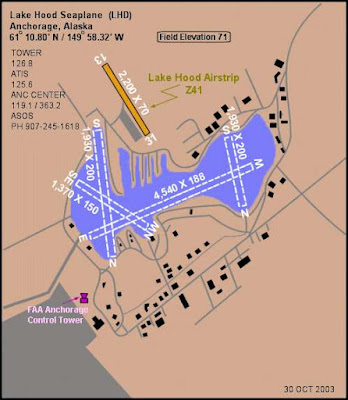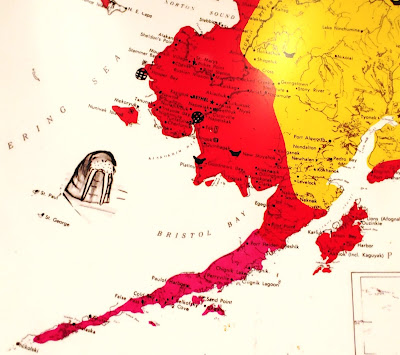 |
| We stayed at the Hotel Captain Cook. The hotel had large wall paintings depicting the voyages of Captain Cook. |
 |
| Our bus tour first headed to the north of the hotel. This is the Alaska Railroad Train Station. |
 |
| This is where the railroad management resides. |
 |
| Looking inland from the port, we could see the bridge connecting Elmendorf to Anchorage. |
 |
| Our bus stopped at Earthquake Park, where we didn't get off, but the driver/guide told us how the earthquake created a sharp drop-off north of the park and peculiar rippling hills in the forest. |
 |
| The next point we visited was the Lake Hood Seaplane Base. It was created by connecting Lake Hood and Spenard Lake. |
 |
| There were parking lots full of planes. |
 |
| Interesting way to move the planes around. Notice that the "truck" ends behind the cab. |
 |
| Not the usual type of plane found here. |
 |
| Planes don't always need their skis, so they were stored in this lot. |
 |
| Lake Hood is very close to Anchorage International Airport. |
 |
| The next stop was the Anchorage Museum. |
 |
| Umbrella handles |















































































No comments:
Post a Comment